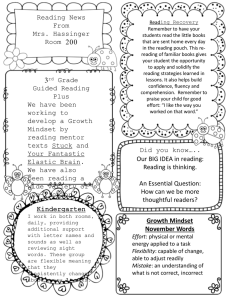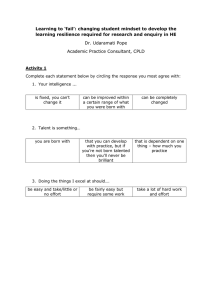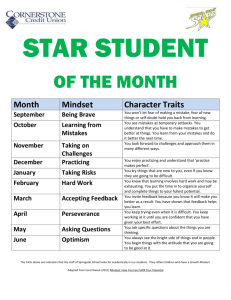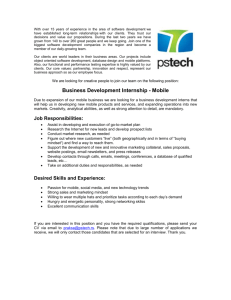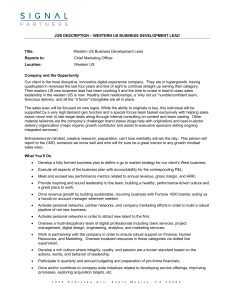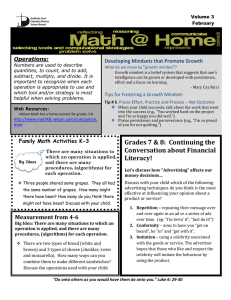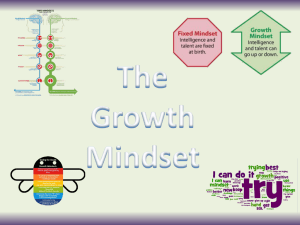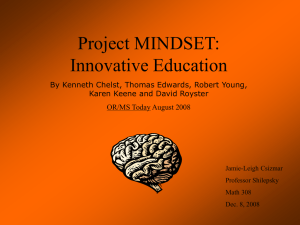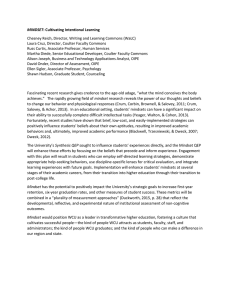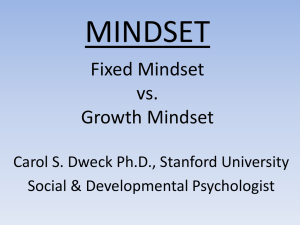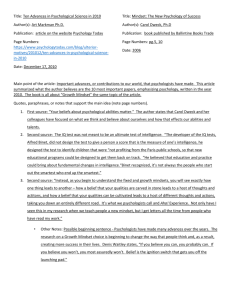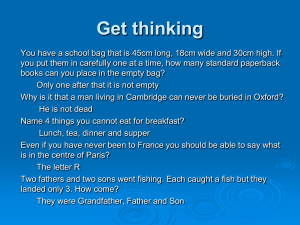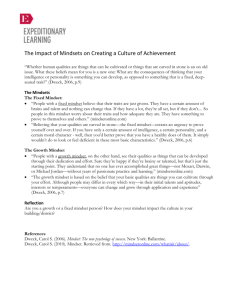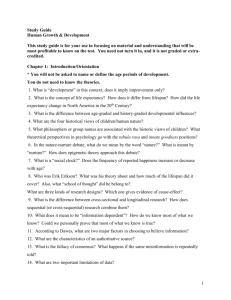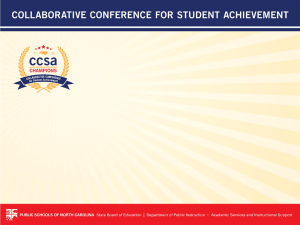Delivering Effective Feedback Handout
advertisement
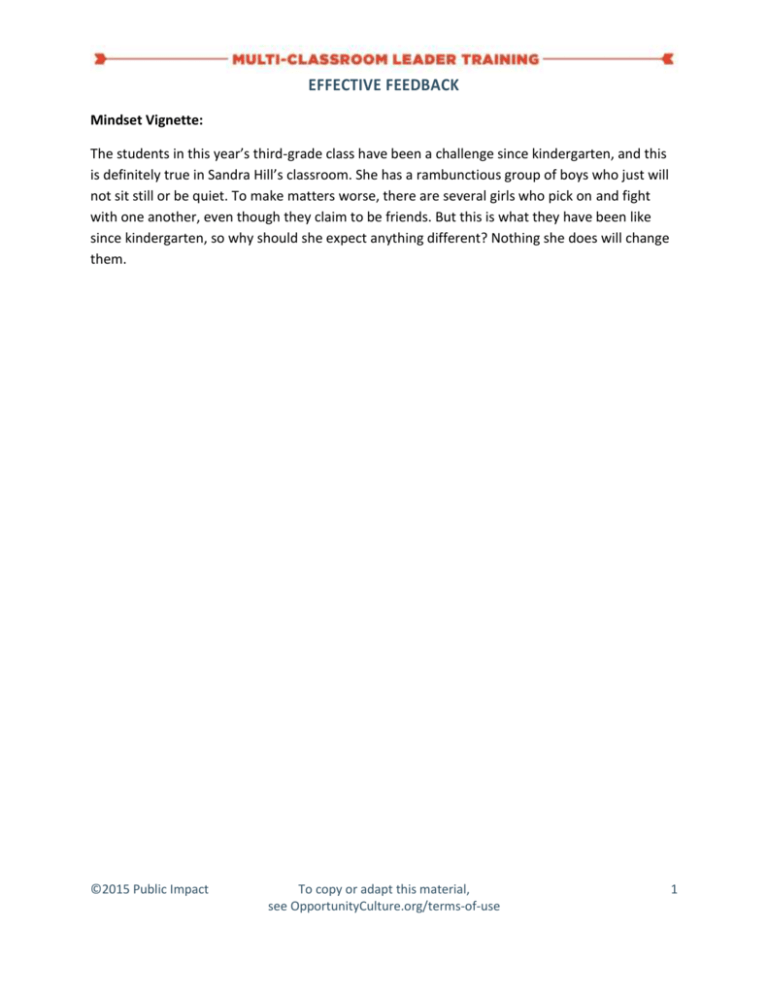
EFFECTIVE FEEDBACK Mindset Vignette: The students in this year’s third-grade class have been a challenge since kindergarten, and this is definitely true in Sandra Hill’s classroom. She has a rambunctious group of boys who just will not sit still or be quiet. To make matters worse, there are several girls who pick on and fight with one another, even though they claim to be friends. But this is what they have been like since kindergarten, so why should she expect anything different? Nothing she does will change them. ©2015 Public Impact To copy or adapt this material, see OpportunityCulture.org/terms-of-use 1 Fixed Mindset Growth Mindset Believe traits are innate and situations are given Believe traits can be developed and situations can be changed Believe effort will not inspire effective Believe talent is a great starting point, change in talent levels but practice, effort, and learning will Believe their traits define their spur effective change performance Steps for Giving Effective Feedback: 1. 2. 3. 4. 5. 6. 7. 8. Start with precise praise. Kick the ‘but’ out of your vocabulary. Compliment! And make it a good one. Ground feedback in observable data. Keep feedback bite-sized. Align feedback with instructional vision. Identify the biggest barrier for student learning. Determine accountability for next steps. Source: Dweck, Carol S. (2006). Mindset: the New Psychology of Success. New York: Ballantine Books. ©2015 Public Impact To copy or adapt this material, see OpportunityCulture.org/terms-of-use 2
